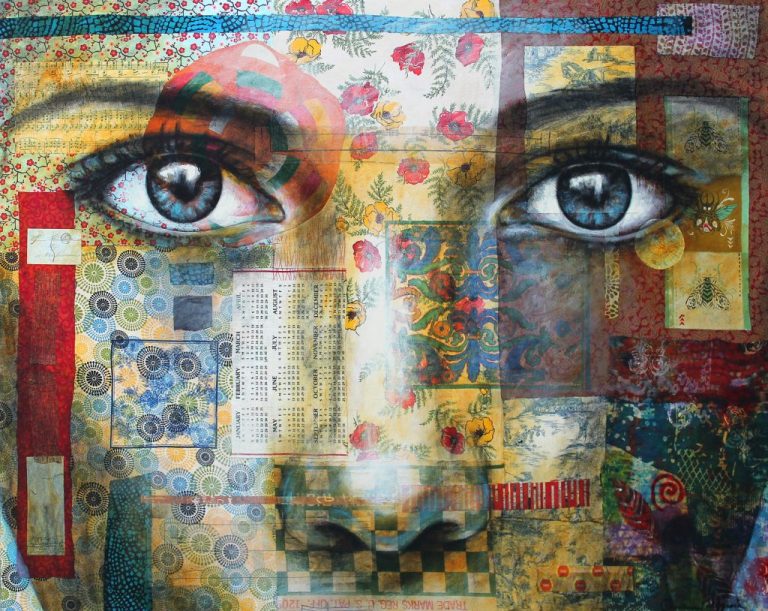3 Techniques for Powerful Writing
Today’s post is by Janeen Mathisen.
When you read a story and call it “powerful writing,” chances are it affected you in a way that’s hard to describe. Authors use various methods to make their writing powerful, and as such there is no one-size-fits-all technique—but that just means there are plenty of stories you can study. This post will examine three techniques for powerful writing and inspire you to write stories that will knock readers’ socks off.
You might think observation is a skill more suited to photographers or animators or film cinematographers. That’s true, but observation skills are also a powerful tool for a writer. You can observe how authors write certain sections or implement particular writing techniques. Most importantly, harnessing the power of observation as a writer lets you notice how certain scenes make you feel. And that’s essential, because once you identify how something in a story makes you feel—and why it works that way—you can inject your stories with emotions you want your readers to feel.
If you’re wondering how to make your story incredible, these three tips can help.
After you’ve read these breakdowns, you’ll be able to identify these writing techniques in other stories and learn how to put them in your own. It’ll make you a better reader, a more succinct writer and a better observer.
So, let’s begin!
Victory? (With a Twist)
This technique is an incredibly effective tool you can use to give individual events in your story multiple layers of depth and character development. It’s common writing knowledge that you should give your main character obstacles to encounter, and that they should fail at plenty of them.
This is basic story conflict—however, with this technique, you can elevate a simple failure into so much more. It will give your story and main character depth, nuance, and importantly, re-readability.
Here is what you do. First, put your main character into a scenario in which they seem to succeed. “Seem to” is the key phrase here. This can happen at any part of your story, just be careful not to overdo it or else the reader will notice your pattern.
Then, review your character’s victory. Tweak it in subtly vicious ways. Simply put, make your character’s victory read and feel like a failure. Although they won, something so bad happened that it overshadowed their victory. They only technically won.
Let’s break down an example. In The Name of the Wind by Patrick Rothfuss, the main character, Kvothe, is trying to get into a university for studying magic. However, he is unable to enter because the tuition is far too high. He is devastated; everything he fought against to enter the university was for nothing. This moment feels like a massive failure.
However, this is where it gets interesting. Kvothe thinks he can’t attend, but he actually can: he misheard the tuition amount due to nerves. In this scene, Rothfuss uses an aspect of the protagonist’s personality to make the victory feel like a failure. Kvothe was able to get in, but at the cost of an emotionally harrowing experience. This experience, the “failure,” sticks in reader’s minds more than the victory. That’s why this storytelling technique is so powerful.
Furthermore, this example demonstrates the power of simplicity. The cause of Kvothe’s failure seems simple, but it has a big emotional impact on the scene.
As you plan and write your stories, remember that not everything in your story has to be intertwined with everything else. That can frustrate and confuse you in your outline process or even lead to burnout. Sometimes, simple answers are the best answers.
Puzzling Character Descriptions
Character descriptions are another tool you can use to elevate and make your writing powerful. I don’t mean average character descriptions, however. As an over-the-top example, all writers know you should avoid from your protagonist describing themselves by looking in a mirror. No, I mean writing character descriptions that have real grit and nuance—they’re like a puzzle that the reader must put together, piece by piece, maybe even flipping between pages to cross-reference things. When you have a character description the reader must use effort to fully assemble, it becomes memorable, unique, and a really clever bit of writing.
How do you do this?
You create a puzzle-like description through contrast. You create it by describing something else, such as a location, and then connect it to the character you are describing. This can be accomplished by connecting them with similar descriptive words—but it’s even more effective if you then apply some inversion.
As an example, in The Fall of Babel by Josiah Bancroft, one of the main characters, Adam, is taken to an underground area. In chapter five, the unfriendly iron entrance of where he and his guide need to go is described as having a “frowning arch” with round windows that “bulged like the eyes of a bullfrog.” This area is at a dead end within the rest of the underground maze of tunnels which gives it an ominous air of finality. The bullfrog-like windows are made of green stained glass which casts the area in a “boggy green light.” Bogs can be treacherous places with dangerous animals lurking underneath the water, so this comparison gives the reader an idea of danger. Additionally, the color green can have negative associations, so the entire area gives off a feeling of dread, and the final sentence compares it to being as charming as a dungeon.
Out of the entire six-hundred-page book, this description was so vivid and memorable it’s been firmly lodged in my head for weeks after I finished the novel. That’s partly because of the description by itself, but it’s also because of what Bancroft does next.
When Adam enters the ominous place, he meets the person who runs it, a man named Ossian. Ossian is described as a man wearing a “green plaid nightcap” that obscures his eyes. Green recalls the green windows just outside, but whereas those were so unobscured they seemed to bulge, Ossian’s eyes are almost hidden. He has a nose that is “cherry red,” cheeks that are “gin-inflamed,” and white whiskers that recall a cactus. His skin color contradicts the skin everyone in the city up above, who have skin that is “the uniform shade of milk.” The other citizens’ complexations are pasty, but Ossian’s is a “rich” umber.
Ossian’s description does several things to contrast the feeling the reader got from the description of the entrance. First, let’s break down the description itself. His eyes are the opposite of the “eyes” of the windows outside, yet Ossian, the windows, and the overall atmosphere outside are united because they’re all green. The entrance is ominous, unfriendly and undecorated, but Ossian is related to food, relaxation, and unique flora. The outside makes readers think of lack, but Ossian is associated with plenty—and that’s not even including the mention of the area around him. His workspace is a giant, seemingly endless warren of overstuffed storerooms, whereas the outside is a long-abandoned warren with beautiful murals no one pays attention to.
Bancroft effectively uses personality and contrast to make a single environment description mesh with a character description. The outside is given to readers with nothing to compare it to, but once readers encounter Ossian and take in how he is described, their minds can immediately begin to make connections. These connections can happen quickly because they’re intriguing, and they’re intriguing due to the multiple layers of contrast.
When you’re going to introduce your readers to a new area or character, consider how you can do so in a uniquely engaging way. This technique will make your stories powerful, and they’ll stick in the reader’s mind long after they’ve put your book down.
Reading Like a Writer
The last two sections were about the craft of writing, but this final one is more about your approach to writing and how you can harness it and make it intentional. “Reading like a writer” is one of the most powerful techniques you can use as a beginning storyteller. But what exactly does that mean?
When you read “like a writer,” it means you don’t simply consume the words and continue reading without thinking about them deeply. You consider how the words make you feel, why the author chose those specific words, and how they contribute to the paragraph or even the individual sentence. Reading like a writer means observing how others perform the craft of writing and taking notes. You observe, question and analyze.
You could write in a notebook as you read or, if it’s a book that you own, write in the margins. Annotate and underline things that catch your attention. If a description sticks in your mind after reading, return to that passage and ask yourself what about the passage caused it to be so memorable. Or you don’t like a description or part of a story—for reading like a writer applies to the larger narrative as well as on a sentence-to-sentence level—dissect it and ask yourself why it didn’t work for you. Was it poorly written or did it stick out from the rest of the writer’s style or tone of voice? Why?
When you encounter odd sentences or paragraphs, try rewriting them as an experiment to see if the information could be conveyed in a different way.
Conclusion
Now that you’ve learned three ways in which you can make your writing more powerful, go forth into the world and use what you’ve learned here. Remember that reading like a writer is one of the most important tools in your arsenal! Take notes and closely observe what you read next. When you question how your favorite stories are written and what makes them work, you are one step closer to becoming the excellent writer you know you can be.
Brainstorm different ways to introduce characters in unique and memorable ways. Consider how you can combine a plot point and a character moment. Above all, remember there are ways you can always improve your writing. Perhaps this article will inspire you to write and observe the craft of writing differently—to create with intention.
As a writer, you’re always changing and growing, and that’s nothing but exciting.
I wish you the best of luck on your writing journey!

Janeen Mathisen is a fantasy nerd who loves analyzing stories and correcting other people’s grammar. When she isn’t doing those things, she is cuddling with her cat and brainstorming story ideas. Find her on X at @janeen_mathisen.
Featured Photo by Micah Tindell on Unsplash












This is a very helpful post. And your examples are well chosen and clarify your points well.